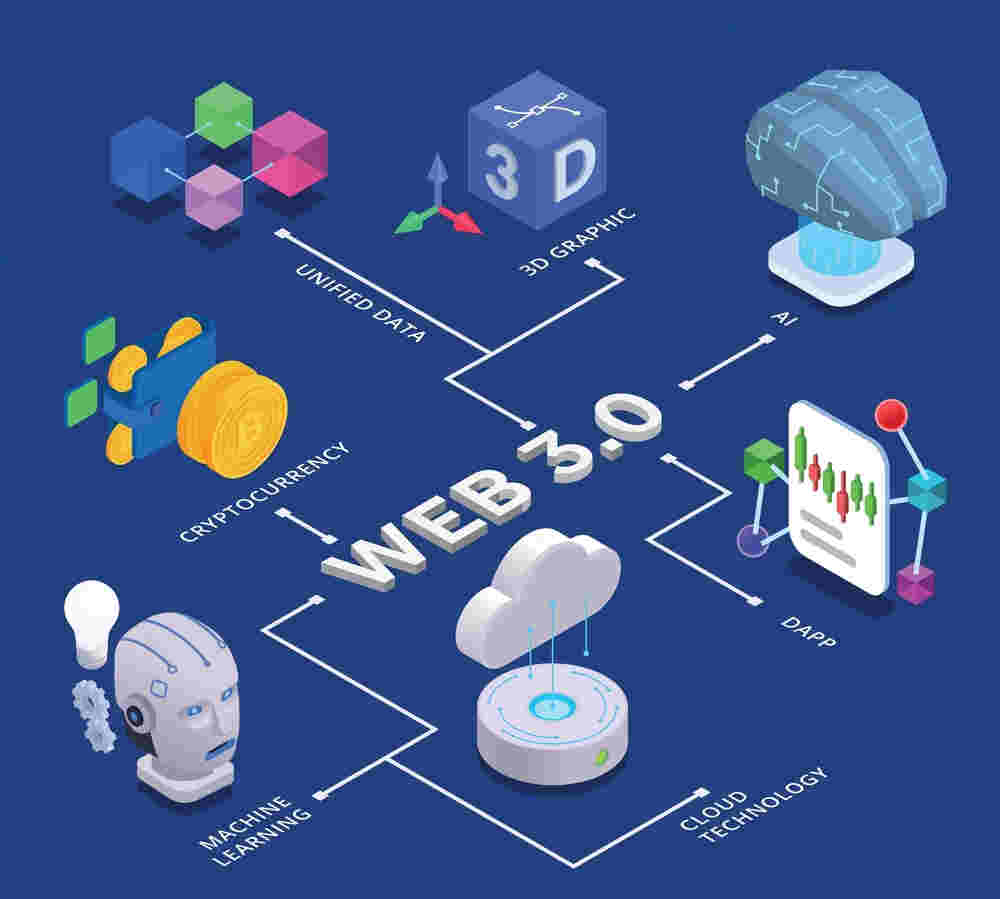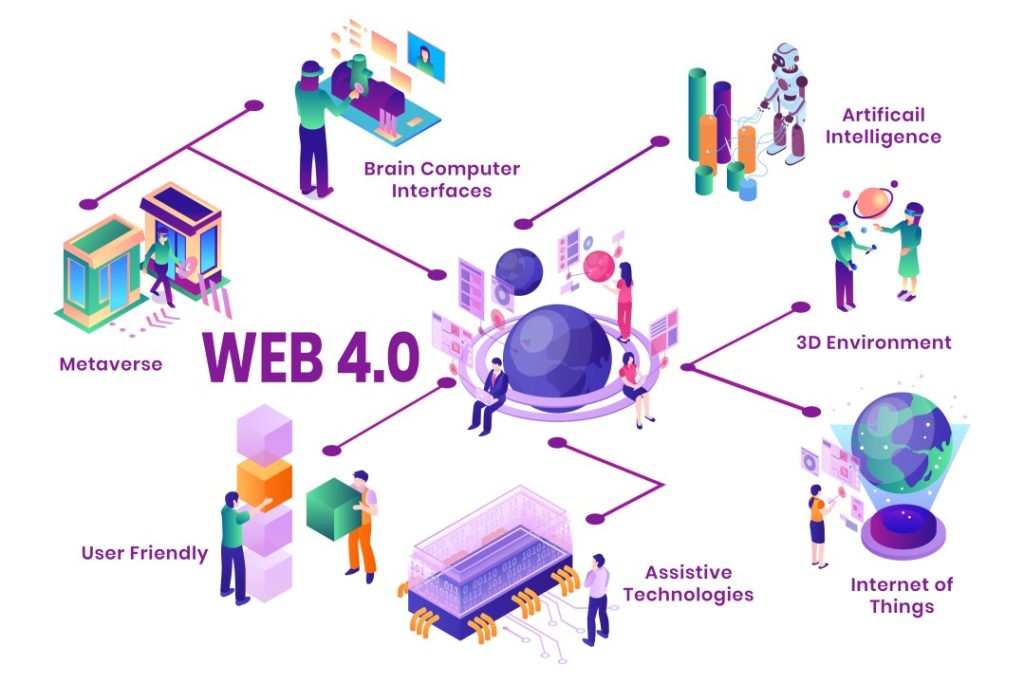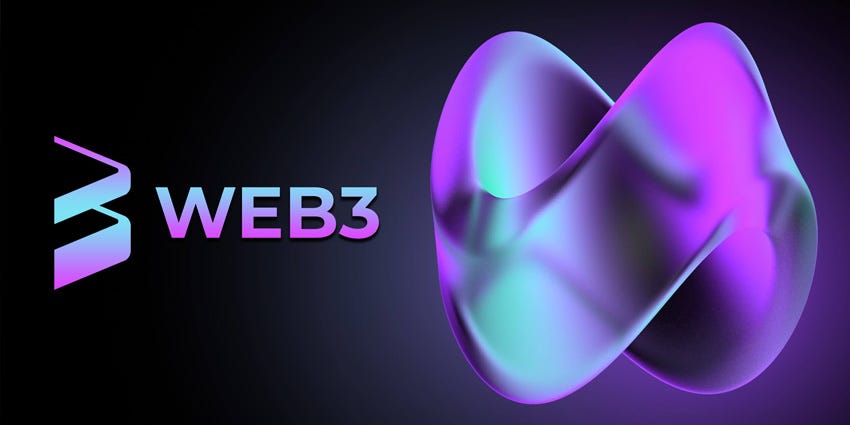The World Wide Web has undergone a remarkable transformation over the years, evolving from a static information source to a dynamic platform for user interaction and content creation. Today, we stand at the precipice of another significant shift – the emergence of Web3, a decentralized and user-centric iteration of the internet.
Decentralization: The Core Principle
Web3 marks a departure from the centralized architecture of Web2, where a select few tech giants control data, applications, and infrastructure. In Web3, power is distributed among a network of users, eliminating the dominance of intermediaries and establishing a more equitable and transparent online ecosystem.
Blockchain: The Foundation of Trust
At the heart of Web3 lies blockchain technology, a distributed ledger that immutably records transactions and ensures data integrity. Blockchain’s inherent security and transparency facilitate trustless interactions among users, enabling them to engage directly without relying on intermediaries.
Token-Based Economics: A New Incentive Structure
Web3 introduces a paradigm shift in economic models, replacing centralized control with token-based incentives. These digital assets, often represented by cryptocurrency tokens, empower users to participate in the network, earn rewards for their contributions, and gain influence over its governance.
Decentralized Applications (dApps): The Driving Force
Web3 applications, known as dApps, are built on decentralized protocols, eliminating the reliance on centralized servers or cloud providers. These applications offer a wide range of functionalities, from decentralized finance (DeFi) and social media to gaming and entertainment, all powered by blockchain technology.
Data Ownership: Reclaiming Control
In Web2, users often relinquish control over their personal data, which becomes a valuable asset for data-driven businesses. Web3 empowers users to retain ownership of their data, granting them greater control over how it is collected, used, and monetized.
Enhanced Security: A Bastion Against Vulnerabilities
Decentralized systems, by their very nature, are less susceptible to single points of failure, making them more resilient against cyberattacks. Blockchain’s cryptographic security safeguards data and transactions, providing a robust defense against unauthorized access and manipulation.
User Empowerment: A More Equitable Digital Landscape
Web3 democratizes the internet, giving users a greater say in how their data is utilized and how the network functions. This shift towards user empowerment fosters a more equitable and transparent online environment.
Fairer Economy: A Redistribution of Power and Wealth
Web3’s token-based economy enables a more equitable distribution of wealth and power. Users can earn rewards for their contributions to the network, reducing the concentration of wealth in the hands of a few.
Innovation: A Catalyst for Unleashing Creativity
The decentralized nature of Web3 fosters innovation by providing a platform for new business models and applications. Developers can experiment with novel ideas without relying on centralized approval processes.

Web3 applications in various domains
Decentralized Finance (DeFi)
- Uniswap: A decentralized exchange (DEX) that allows users to trade cryptocurrencies without intermediaries.
- Compound: A platform for lending and borrowing cryptocurrencies, enabling users to generate passive income from their crypto holdings.
- Aave: Another lending and borrowing platform, offering a wider range of DeFi services, including margin trading and flash loans.
Social Media and Communication
- Steemit: A blockchain-based social media platform that rewards users for creating and curating content.
- Mastodon: A decentralized social networking platform that emphasizes user autonomy and privacy.
- Diaspora: Another decentralized social networking platform that prioritizes user ownership and control over their data.
Gaming and Entertainment
- Axie Infinity: A blockchain-based game where players can earn tokens by breeding, battling, and trading digital creatures called Axies.
- Gods Unchained: A trading card game that utilizes non-fungible tokens (NFTs) to represent collectible cards.
- Decentraland: A virtual world where users can own and develop land, build experiences, and interact with others.
Data Ownership and Management
- uPort: A decentralized identity platform that allows users to control and share their personal data securely.
- VeriID: A similar platform that provides verifiable credentials and authentication services.
- Civic: A blockchain-based identity management system that aims to improve data privacy and security.
These examples showcase the diverse range of applications that are emerging in the Web3 space. As Web3 technology continues to evolve, we can expect to see even more innovative and transformative applications that redefine our interactions with the internet.
WEB 3 VS WEB 4
Web3 and Web4 are both envisioned as transformative iterations of the internet, but they have different core focuses and goals.
Web3 is primarily focused on decentralization, token-based economics, and user empowerment. It aims to create a more equitable and transparent online ecosystem by distributing power among users and providing them with greater control over their data and the digital value they create.
Web4, on the other hand, is more focused on AI-powered personalization, hyperconnectivity, immersive experiences, and seamless integration with everyday life. It envisions a more intelligent and user-centric digital landscape where AI is used to tailor content and experiences to individual needs, and where physical and digital worlds are seamlessly intertwined.

While Web3 and Web4 are distinct concepts, they are not mutually exclusive. In fact, they are likely to complement each other in the future. For example, Web4 applications could leverage Web3 technologies to ensure user data ownership and control, while Web3 applications could benefit from Web4’s AI-powered personalization and immersive experiences.
Here is a table summarizing the key differences between Web3 and Web4:
| Feature | Web3 | Web4 |
|---|---|---|
| Core Focus | Decentralization, token-based economics, user empowerment | AI-powered personalization, hyperconnectivity, immersive experiences, seamless integration with everyday life |
| Technology | Blockchain, cryptocurrency, smart contracts | AI, machine learning, augmented reality, virtual reality |
| Goals | Create a more equitable and transparent online ecosystem | Provide personalized, immersive, and empowering digital experiences |
| Potential Benefits | Enhanced user control over data, fairer economy, innovation | Personalized content and recommendations, improved accessibility, increased efficiency |
| Challenges and Considerations | Technical complexity, regulatory landscape, usability and accessibility | Data privacy and security, ethical considerations, algorithmic bias |
Overall, Web3 and Web4 represent two exciting and forward-looking visions for the future of the internet. As these concepts continue to develop, we can expect to see even more innovative and transformative applications that reshape our interactions with the digital world.
Challenges and Considerations:
While Web3 holds immense promise, it is not without its challenges. One of the primary hurdles is the complexity of Web3 technologies, which require technical expertise and a grasp of blockchain concepts. Additionally, regulatory frameworks surrounding Web3 are still evolving, potentially hindering adoption and innovation. Scalability concerns also arise, as decentralized networks need to be able to handle large volumes of transactions without compromising performance. Finally, user usability is crucial for widespread adoption, and ensuring that Web3 applications are intuitive and accessible to a broader audience is essential.
Conclusion: A Paradigm Shift in the Making
Web3 is still in its nascent stages, but it has the potential to reshape the internet as we know it. By embracing decentralization, token-based economics, and enhanced user control, Web3 can transform the way we interact with the digital world, making it more open, equitable, and empowering.
Here are some informative resources to learn more about Web3:
- Web3 Foundation: https://web3.foundation/
- ConsenSys: https://consensys.io/blog/what-is-web3-here-are-some-ways-to-explain-it-to-a-friend
- Harvard Business Review: https://store.hbr.org/product/what-is-web3/H070UE
- CoinDesk: https://www.coindesk.com/web3/
- The World Economic Forum: https://www.weforum.org/agenda/2022/05/what-is-web3-why-care-future/
These resources provide comprehensive information about the core principles, technologies, and applications of Web3. They also discuss the potential benefits and challenges of this evolving internet paradigm.
